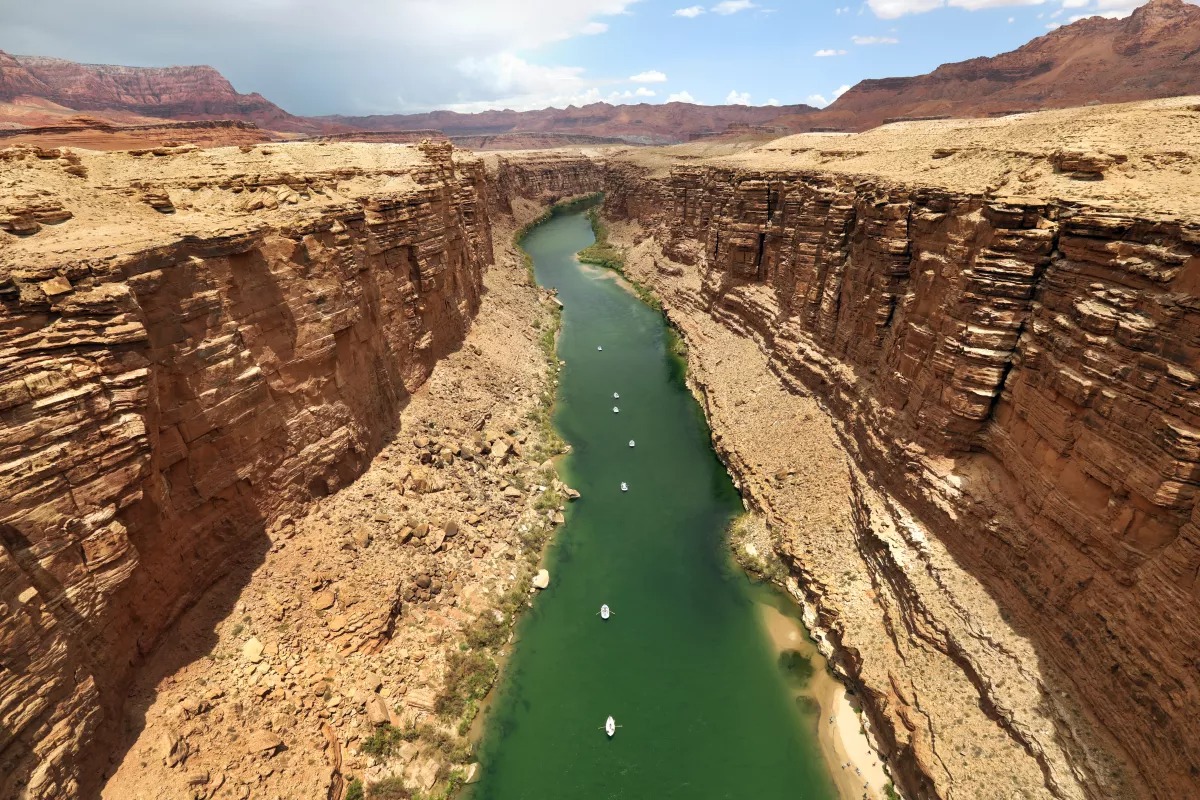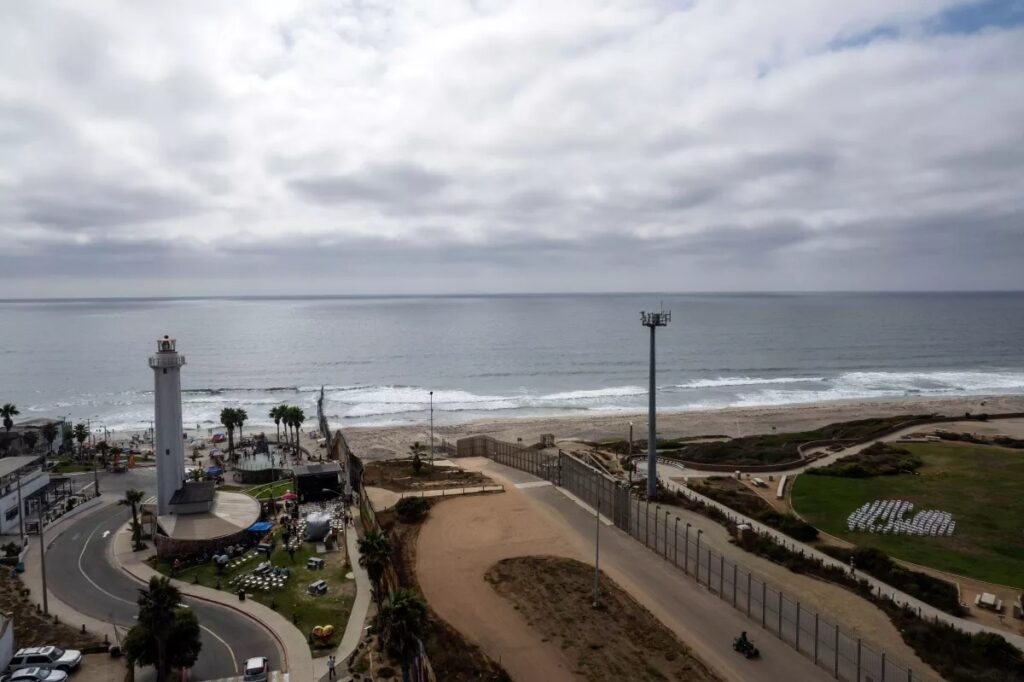BY ERIC KUHN
FEB. 27, 2023 3:30 AM PT
California and the other Colorado River Basin states are at odds over how to halt the precipitous decline of Lake Mead. The impasse reflects a century of failure to take a basic step left undone by the original Colorado River Compact.
The seven states in the basin have made dueling proposals for balancing water demand with the available supply. Both require large cuts in water use in all three Lower Basin states: California, Arizona and Nevada. While California’s proposal puts a greater burden on the system’s junior users, primarily the Central Arizona Project, the other states would lean more heavily on California.
What’s missing is a water-sharing agreement among the Lower Basin states. In contrast to the Upper Basin states — Colorado, New Mexico, Utah and Wyoming — the Lower Basin states never decided how to divvy up their part of the river.
A U.S. senator put it this way: “The trouble is that there is not enough water in the river available to the Lower Basin to satisfy the demands of the Lower Basin states, particularly … Arizona and California. Somehow, somewhere, the issues must be settled.” Those were the words of California’s William Fife Knowland at the beginning of Senate committee hearings on the Colorado River 75 years ago.
The Colorado River Compact, signed a century ago last fall, only apportions water between two basins, the Upper Basin and the Lower Basin. The negotiators left to future subcompacts the far more difficult task of dividing the water among the individual states within the basins.
The Upper Basin states completed that task in 1948. To deal with uncertainties in the water supply and the obligation to the Lower Basin states, the Upper Basin compact allocates water by share of what’s available. My home state of Colorado, for example, can consume 51.75% of the water available for use in the Upper Basin. If more water is available, Colorado can use more; if there is less, Colorado must use less.
The Upper Basin compact did much more than that. It also includes provisions for assessing system reservoir evaporation and an interstate agency to administer the subcompact.
The Lower Basin states made numerous attempts to negotiate their own subcompact but invariably failed. At the 1948 Senate hearing, representatives of the states agreed that there were three reasons for this: California and Arizona couldn’t agree on how to divide the 8.5 million acre-feet of water apportioned to the Lower Basin by the 1922 compact; they couldn’t agree on how to measure how much water each state was using under the 1922 compact; and they couldn’t agree on how to assess evaporation from Lake Mead and other large reservoirs.
Seventy-five years later, these issues have yet to be resolved.
A 1963 Supreme Court decision dodged the difficult questions raised by the Lower Basin’s competing demands. But it did complicate matters further by opening the door to diversion of more water by the Central Arizona Project.
In 1948, when Sen. Knowland acknowledged that there was not enough water for both Arizona and California, the conventional wisdom was that the natural flow of the river at its mouth, if unaffected by humans, was about 18 million acre-feet per year. Today, because of climate change, that figure is closer to 13 million. And as aridification continues, there will be even less.
The river is seriously overallocated. The 1922 compact and a 1944 treaty with Mexico apportion a total of 17.5 million acre-feet a year, far more than the available supply. And there is virtually no chance that all seven states will ever agree to amend or redo the 1922 compact. It’s not even clear that the political leadership of all four Upper Basin states can accept that climate change is real.
So what should California do? I believe the state has only two alternatives: Engage in another round of contentious and unpredictable litigation or, preferably, encourage its fellow Lower Basin states to get their house in order by finally negotiating their own subcompact.
California, Arizona, Nevada and the tribal communities of the Lower Basin are in a position to take advantage of what has worked for the Upper Basin. A Lower Basin subcompact could allocate water based on how much is available, not what we thought we had decades ago. It could also include provisions for assessing evaporation and a commission to administer the deal. And it could encourage the cooperative banking, water recycling and agricultural efficiency projects that the Lower Basin desperately needs to meet future demand.
To be successful, the negotiators for all parties would have to check their historical grievances at the door, make difficult compromises and be open to new and innovative solutions.
Given that Arizona and California couldn’t agree on water use before, why is such a deal possible now? The answer is that no better option exists. This is the only way for California and its neighbors to control their own water destiny.
Eric Kuhn is a former general manager of the Colorado River Water Conservation District and a co-author of “Science Be Dammed: How Ignoring Inconvenient Science Drained the Colorado River.”



